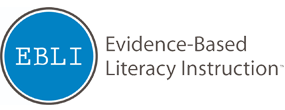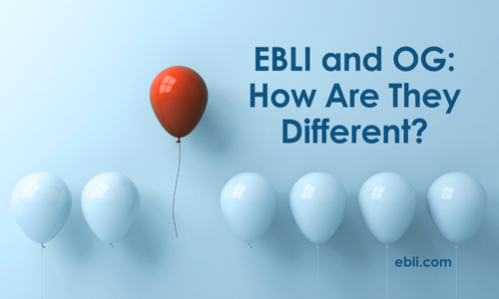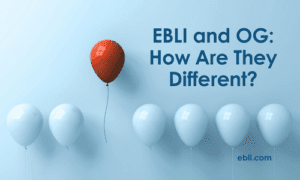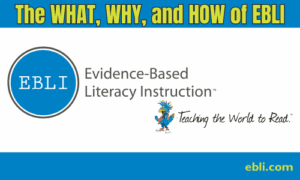For over a century, educators have been searching for the best way to teach children to read. This blog will explore two approaches to literacy: Orton–Gillingham (OG), a print-to-speech approach and EBLI (Evidence-Based Literacy Instruction), which is built on the Linguistic Phonics, speech-to-print framework.
Both approaches share the same noble goal: helping every student, including those who struggle the most, become skilled, confident, and joyful readers. Both are explicit, systematic, and intentional. However they differ significantly in how they get there — and those differences ripple into classroom practice, student engagement, and overall outcomes.
This blog will explore:
– What makes EBLI’s speech-to-print approach unique
– How it differs from OG’s print-to-speech approach
– What teachers notice when transitioning from OG to EBLI
– Why these differences matter for students, teachers, and families
The goal isn’t to pit one approach against the other. Instead, it’s to provide clarity for those who are EBLI-curious while currently using OG or an OG-based program.
Print-to-Speech vs. Speech-to-Print: The Core Difference
The most fundamental distinction between OG and EBLI is their starting point.
Orton–Gillingham (Print-to-Speech) begins with letters and sounds, and further along in instruction incorporates spelling rules and syllable types to teach the complex code. Students are explicitly taught the letters and sounds in isolation through drills, and they then learn to connect the letters and sounds back to words through reading and spelling. One letter spellings are taught extensively before advancing to more complex code. Instruction moves sequentially, with mastery required at each level before progressing. Print or letters, which are manmade, lead instruction.
EBLI (Speech-to-Print) starts with the sounds of spoken language — the foundation every child already knows. Emerging learners are introduced to single-letter spellings within the context of whole words, making the process meaningful and relevant. They segment the sounds to build the word, blend the sounds back together, and then both say and write the word. Further instruction of more complex text includes sorts and additional activities, rooted in words and starting with the sound first, then mapping the sounds onto the spellings in print, teaching reading by teaching spelling. This pathway is flexible, integrated, and accelerates acquisition of sound spelling correspondences; mastery is not a prerequisite to moving forward. Speech or sounds, which are natural, lead instruction.
Think of it as two different routes up the same mountain. OG builds a carefully constructed staircase with railings and small, manageable steps, ensuring that any misstep is revisited until mastered. EBLI, on the other hand, encourages a more agile climb—returning to footholds only when necessary—so learners reach higher ground more quickly.
Why Speech-First Instruction Feels Different
Shifting the starting point from print to speech changes much more than lesson order. It reshapes the entire learning experience.
Integrated Skills: In EBLI, lessons weave together phonemic awareness, phonics, spelling, fluency, vocabulary, comprehension, handwriting, and writing, with students quickly progressing to applying these skills in reading and writing. Skills are taught in authentic contexts, not in isolation. By contrast, OG often compartmentalizes these skills.
Authentic Texts Early On: EBLI introduces supported reading with authentic texts almost immediately. This provides students the opportunity to experience extensive amounts of alphabetic code in supported, applicable practice, accelerating intrinsic learning and transference to accurate, automatic, independent reading. Students may use decodables briefly, but they quickly move into grade-level books. In OG, decodable texts remain central for a much longer time, which impedes transference to books and other authentic text. This hinders their ability to read text required at school and in daily lives.
Flexible Thinking vs. Rule Memorization: OG emphasizes rules and syllable types. EBLI minimizes rules, focusing instead on pattern recognition and flexible sound–spelling connections.
Progression and Mastery: OG requires students to master each skill before advancing. Sometimes this results in students stuck in the same concept, such as CVC words or blends, for weeks, months, or even years before being allowed to move on. EBLI interleaves literacy skills, concepts, and information over time, allowing students to move forward quickly, circling back as needed with both explicit instruction and applying what they learned in reading authentic text and independent writing.
Explicit Instruction: With EBLI, explicit instruction centers on the concepts unique to the English alphabetic code, along with the processes, activities, and skills necessary to effectively and efficiently apply the code in reading and writing. This foundation enables learners to progress quickly to intrinsic learning, which reduces the need for teaching the entire code explicitly—only a fraction is necessary. With OG, the code is taught explicitly in its entirety.
A Side-by-Side Comparison
| Category | Orton–Gillingham (OG / Print-to-Speech) | EBLI (Speech-to-Print / Linguistic Phonics) |
| Starting Point | Begins with print: letters, syllable types, and rules → connects back to speech sounds | Begins with words and speech sounds students already know → connects to spellings in print |
| Instructional Focus | Heavily rule- and syllable-based; mastery required before moving forward | Flexible, integrated; students move forward without needing mastery at each step |
| Pacing | Slower, step-by-step progression; students may stay on basic skills for extended time | Faster, more efficient progression; concepts spiral back for review as needed |
| Text Use | Primarily decodable texts, often for a long period | Decodables used briefly; authentic grade-level texts introduced quickly |
| Multisyllabic Words | Introduced later, often in controlled fashion | Introduced early and practiced regularly |
| Phonemic Awareness | Often taught separately or in isolation | Embedded and integrated into every lesson |
| Encoding (Spelling) | Taught through rules, drills, and syllable types | Interwoven with reading; taught through sound-to-spelling connections |
| Cognitive Load | Higher—requires memorizing and applying rules, exceptions, and syllable patterns | Lower—minimizes rules; emphasizes flexible application of sound-spelling patterns |
| Student Experience | Can feel rigid or repetitive; some students experience anxiety with mastery expectations | More intuitive and engaging; scaffolds reduce anxiety and build confidence |
| Lesson Planning | Often individualized and time-intensive for teachers | Streamlined; EBLI lessons pre-designed with flexible tracks |
| Student Outcomes | Steady progress, though often slower; older students may feel “held back” | Accelerated progress; students engage with authentic reading/writing sooner |
What Teachers Say: Voices from the Classroom
Teachers who have worked with both OG and EBLI extensively report noticeable differences in their students’ experiences and outcomes.
Brandy Gulliford
Trainings: EBLI, Wilson Fundations, IMSE Training and Practicum, Really Great Reading
- With EBLI, students are more engaged and enjoy learning.
- Their confidence and self-esteem improve noticeably.
- EBLI Instruction is more efficient – students complete intervention in less time.
- Instruction is more effective – students read more accurately and fluently compared to OG.
- The rules in OG block students from having cognitive flexibility. Once they are told a rule and it is taught extensively then it is changed down the line, they have a very hard time moving forward.
- Prep time with OG is massive. I used to spend hours every Sunday prepping my lessons. With EBLI, the lessons are right there for you, and there is minimal prep time or extraneous materials needed.
Liz Goetz
Trainings: EBLI, OGOA
- OG often relies heavily on memorizing rules (that have many exceptions), which is difficult for students with memory challenges.
- Learning through OG feels less fluid; EBLI feels more intuitive—like how kids naturally learn to play video games—while still being explicit.
- Students using EBLI naturally apply what they learn to daily life, which doesn’t always happen with OG.
- The speech-to-print approach creates frequent “light bulb moments” for students.
- EBLI integrates encoding (spelling) into lessons in a natural, seamless way.
Lindsay Journo
Trainings: EBLI, CERI, IMSE, Barton
- OG left me thinking that students — especially those with dyslexia — could only read what I directly taught. EBLI showed me that with the essentials and consistent strategies, they could unlock far more.
- With OG, I felt like I was overloading my students with rules and teacher-talk. With EBLI, my directions are clear and simple — kids get to the learning faster.
- Most of my OG lesson time was spent on activities and drills. In EBLI, we’re engaging in authentic reading and writing almost immediately.
- Progress was steady but slow with OG. With EBLI, the gains are quick and noticeable — for me, my students, and their families.
Jennifer Yenerich
Trainings: EBLI, IMSE, Spalding, Wilson Fundations
- EBLI moves students forward faster—you’re not stuck in “short vowel/blend land” for long.
- In OG, students often stay with decodables for extended periods. EBLI transitions them to authentic text quickly.
- EBLI places strong emphasis on multisyllabic word reading and spelling, while OG focuses mainly on one-syllable words and limited controlled two-syllable words.
- EBLI meets students where they are and moves them forward. In OG, students are often taken backward until mastery, meaning a 7th grader might be placed back at CVC words.
Lorraine Madden
Trainings: EBLI, Multisensory Reading Levels 1-4 and Teacher Trainer
- OG: Uses large sound card packs (20–35 cards per lesson); requires spelling sounds (about 10 per lesson); introduces just one new sound/concept per lesson and reviews it for the next 4 lessons; discourages using any sound/concept not taught for both reading and spelling (greatly increasing planning time), teaches phonemic awareness in isolation; ends with controlled passages tied to the day’s concept.
- EBLI: Moves faster, teaching the same sound/different spelling and same spelling/different sound; introduces multisyllabic words much earlier for both reading and spelling; integrates phonemic awareness (a main weakness for dyslexics) throughout all instruction.
Lauren Morse
Trainings: EBLI, Phonics First
- In EBLI, students don’t need to master a concept before learning the next; OG requires mastery.
- EBLI doesn’t rely on rules; OG does.
- EBLI uses decodables briefly before moving to authentic texts; OG depends heavily on decodables.
- EBLI moves quickly and embeds concepts in authentic reading and writing; OG moves slowly and isolates skills through drills.
- EBLI adds scaffolds to reduce anxiety; OG students often seem more anxious.
- EBLI encourages flexibility; OG feels rigid, always searching for a rule to explain exceptions.
Why It Matters for Students
The differences in structure and philosophy matter because they affect how students experience literacy learning.
– Confidence grows faster with EBLI.
– Reading in uncontrolled text happens sooner.
– Cognitive burden is lighter.
– Engagement is higher.
Why It Matters for Teachers
Teachers’ lives change when shifting from OG to EBLI:
– Less planning time
– More classroom joy
– Fewer battles with frustration
– Extensive Professional growth
– Few materials to manage
Honoring Both Paths
It’s important to acknowledge that OG has served countless students and teachers well. Its structure, explicitness, and systematic nature provide a solid foundation for many learners.
At the same time, EBLI’s speech-to-print framework represents an evolution — a fresh way of thinking about how literacy can be taught. EBLI facilitates student learning based on how our English alphabetic system was intended: matching the sounds in words we say to the letters in print that represent them.
Thousands of classroom teachers and interventionists who use EBLI have reported seeing their students make greater gains in less time. These outcomes, and the positive impact they have on both students and educators, make EBLI an approach well worth deeper exploration.
Final Thoughts: An Invitation to Curiosity
If you’ve been teaching OG, it’s natural to feel cautious about exploring EBLI—any shift in methodology can seem daunting. But curiosity is the first step toward growth. EBLI doesn’t ask you to set aside everything you know. While the knowledge gained through OG can be valuable, much of it isn’t essential for helping students become skilled readers, spellers, and writers. EBLI offers a fresh perspective: one that begins with the speech students already have, weaves in literacy skills seamlessly, and accelerates their journey into authentic, joyful reading.
To learn more, this EBLI webinar will feature a panel discussion with several of the educators who have shared their feedback above and have taught both OG and EBLI extensively. They will share their experiences and the differences between the approaches as well as differences in some of the instructional activities.
Interest in EBLI has been rising exponentially and spreading around the US and the world, almost exclusively from others sharing stories of their experiences with EBLI and their impressive, accelerated student outcomes.
Student literacy outcomes are of utmost importance. Our mission with EBLI is to provide effective, efficient instruction catapulting ALL learners to their highest literacy potential. The journey of teaching literacy is a lifelong path of learning for all of us.

Nora Chahbazi, B.S.
Founder, EBLI Evidence-Based Literacy Instruction
Nora has dedicated over 25 years to improving reading instruction. She founded EBLI: Evidence-Based Literacy Instruction and has trained thousands of educators worldwide, teaching learners of all ages and abilities.
She has spoken at numerous conferences, including Plain Talk for Literacy and The Reading League. Nora collaborates with schools as well as organizations focused on implementing research-based teaching practices to promote high-level literacy for all.
Nora served as the literacy consultant for the documentary The Truth About Reading and participated in discussions after screenings, including at the SXSW film festival. She is on the board of The Reading League Michigan.
Nora has appeared in various media, including Emily Hanford’s Sold a Story podcast, the PBS documentary Building the Reading Brain, and an interview on Oprah Radio with Maya Angelou.
She is committed to the mission of teaching the world to read.




